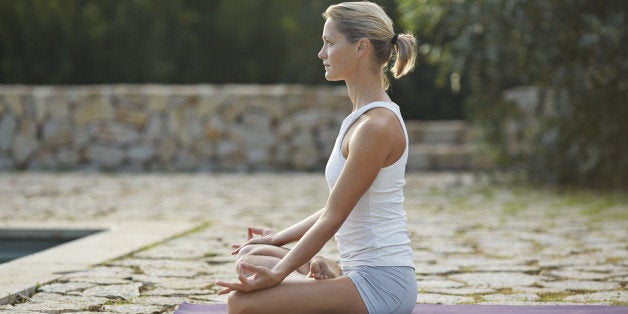
Practicing Co-operative Opposition
"The aim of yoga is to calm the chaos of conflicting impulses."
B.K.S. Iyengar (the most influential yogi of modern times)
What if your yoga practice could help heal distress and resolve interpersonal conflict?
It can. Cooperation between opposing forces is the key to reaching peace. It's not about erasing differences but balancing both sides. This is true on the yoga mat and at the negotiation table. Tensions in your body and conflict between bodies can't be realistically resolved by getting rid of differences. We don't want dark and light to blend into grey. Best results follow from maintaining yet balancing our differences.
Research confirms that balancing opposite forces on the yoga mat has a dramatic power to calm the mind. Calm minds solve interpersonal problems more creatively. http://www.umassmed.edu/cfm/about-us/people/2-meet-our-faculty/kabat-zinn-profile
Complementary opposition, (or "co-opposition" as I call it) transforms conflict into connection. We often think of opposites as enemies, each seeking to eliminate the other. Co-opposition challenges this by suggesting that opposites need and balance one another within the boundary of a larger whole. The notion of embracing opposites has been elegantly expressed in the ancient Chinese yin-yang symbol.
A gentler, less adversarial attitude flows from this way of perceiving the world. Instead of seeking to eliminate either side of an opposing pair, the goal is to respect the other side's right to exist, recognizing (like the dot in each teardrop) that we each carry a part of the other. Tendencies that are directly opposed, which often act in conflict, can be bound together into a complementary whole.
What began as conflict ends up to the BENEFIT of both. Because it promotes growth. This isn't abstract theory but practical fact, proven daily on the yoga mat.
Here's how it works:
Yoga shouldn't be mistaken for effortless relaxing. Although extension, (aka relaxation or stretching) is important, yoga postures are equally about muscular engagement and control. Every pose, when done properly, employs a careful balance between strength (muscular contraction) and flexibility (muscular extension). It takes focused effort to find yourself in effortless flow.
Picture a woman in a meditative, cross-legged pose. She isn't "relaxed" in the sense of hers body or mind being slack. She has to stay mentally focused and physically engaged to lift her head while dropping her shoulders away from her ears, lift her chest while rolling back her shoulders and rooting her tailbone down. Yet she is calm. Her mind if fully absorbed in these co-oppositional actions. There's no way she's caught up in a replay of last night's fight with her mate, so in that way you can say she is relaxed.
So what's the point? Why bother with sending body parts in opposite directions?
The practice develops physical strength and co-ordination plus concentration, yet more importantly it is a perfect practice for balancing the opposite impulses that go on simultaneously inside your head and heart. You don't need to extinguish your anger at yourself for missing that work deadline in order to keep mindful that you do care about doing your job well. Your practice balancing intentions within your body paves the way for doing the same in your mind.
The work you do in your body also prepares you to balance your personal relationships. You have an impulse to be generous to your partner. You also want to be praised and admired. Body work teaches you the answer to conflicting forces is not "either-or". The solution is "both-and."
A body that's too flexible lacks firmness and risks injury. In the same way, if you are overly flexible in negotiation you risk losing out and giving in on your legitimate needs. That isn't fair. You deserve more.
Likewise strength without flexibility makes you bound up in muscle, literally "muscle-bound". This is parallel, in relationships, to the rigid aggression that denies the legitimate needs of the other. That isn't fair since he or she deserves more.
Either extreme will ensure an unbalanced process and escalate conflict. Build a bridge over conflict by respecting and embracing opposing interests.
Yoga poses provide a training ground for balancing the conflicting impulses and needs you confront on a larger scale in the social world of dispute resolution. By practicing at home, in the quiet of your own body, you are engaged in the same balancing of opposites that is required to calm your emotions and then succeed in negotiation.
Both of your interests are bound together, even as they differ. Rather than treating opposites as enemies, they can be seen as partners in a delicate dance, each necessary to, and balanced by, the other.
Mike MacConnell
Family Mediator
www.reflectivemediation.ca
